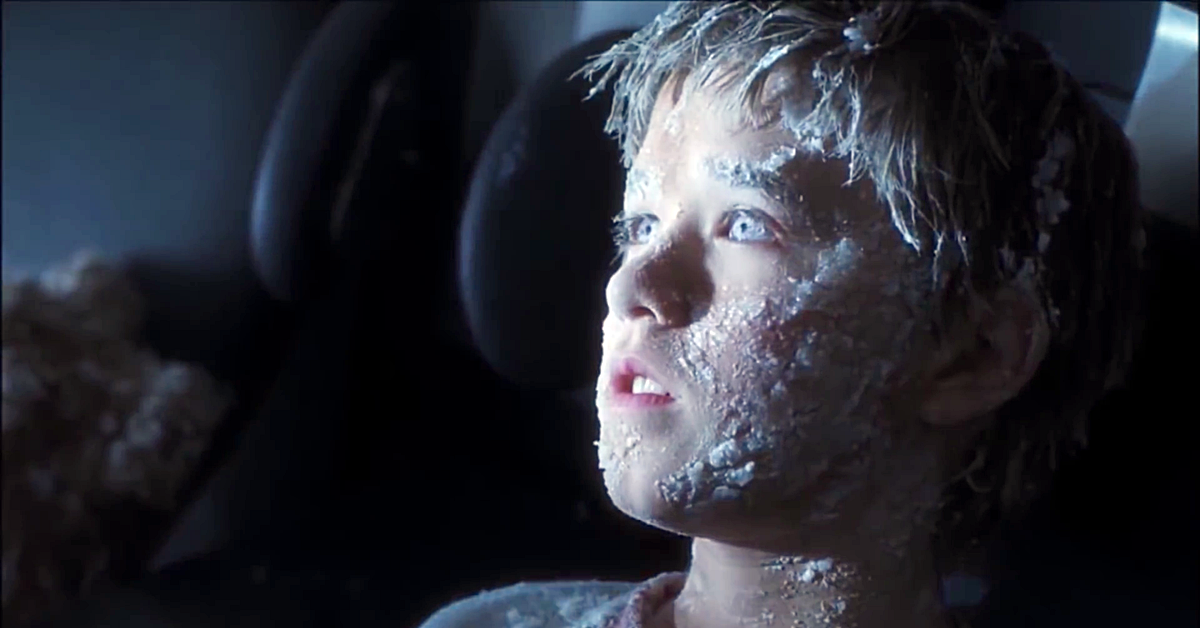A film set in the future that is now nearly two decades old, A.I. Artificial Intelligence (often referred to simply as A.I.) tells the story of a childlike android called David who has been programmed with the ability to love. It may not be Steven Spielberg’s best film but it’s certainly one of his most interesting, so below are 10 futuristic facts about this heartfelt science fiction drama from 2001.
10. It’s based on a 1969 short story by the science fiction author Brian Aldiss

A.I. Artificial Intelligence is loosely based on the short story Supertoys Last All Summer Long, which was written by the late science fiction author Brian Aldiss.
Aldiss’ short story was re-released the same year the film hit cinemas as part of a collection called Supertoys Last All Summer Long and Other Stories of Future Time, which also featured the stories Supertoys When Winter Comes and Supertoys in Other Seasons.
[rtk_adunit_top]
9. Stanley Kubrick had been trying to adapt the story since the 1970s
The late film director Stanley Kubrick had been trying to make A.I. since the early 1970s, when he acquired the rights to Brian Aldiss’ short story.
Kubrick hired a number of writers to work on the project over the years, including Aldiss himself, but ultimately felt that the technology to fulfill his vision did not yet exist.
[rtk_adunit_middle]
8. It was also inspired by the story of Pinocchio

After firing Brian Aldiss in 1989 citing creative differences, Stanley Kubrick hired another science fiction author called Ian Watson, prompting Aldiss to comment “not only did the b*stard fire me, he hired my enemy instead.”
It was at this time that Kubrick sought other inspiration for the project, which led to him handing Watson Carlo Collodi’s novel The Adventures of Pinocchio, claiming that he saw A.I. as being “a picaresque robot version of Pinocchio.” It was even reported that from this point Kubrick only ever referred to the project as ‘Pinocchio’.
[rtk_adunit_bottom]
7. Jurassic Park was to thank for it eventually getting made

Viewing Jurassic Park upon its release in 1993 convinced Stanley Kubrick that the technology now existed to make A.I. look how he had always imagined it should.
Kubrick asked Spielberg to direct the project in 1995, but things didn’t get moving until Kubrick passed away four years later in 1999, at which time Spielberg started writing the screenplay himself, the first time he had done this since Poltergeist in 1982.
[rtk_adunit_top]
6. Haley Joel Osment was Steven Spielberg’s only choice for the role of David

Another reason Stanley Kubrick didn’t make the film was because he believed for many years that David the child android should be a computer generated character.
Despite Kubrick auditioning Jurassic Park actor Joseph Mazzello for the role in the mid 1990s, David the android was of course eventually played by Haley Joel Osment, who was said to have been Steven Spielberg’s first and only choice.
[rtk_adunit_middle]
5. Jude Law learnt how to dance like Fred Astaire and Gene Kelly

To prepare for his role as Gigolo Joe, a character that the film’s costume designer Bob Ringwood described as “a Victorian romantic hero crossed with a futuristic Elvis Presley,” Jude Law learned how to dance like two of Hollywood’s greats.
And not only did Law learn the moves of Fred Astaire and Gene Kelly, but he also studied mime, and even learnt how to move like a peacock!
[rtk_adunit_bottom]
4. Six different versions of Teddy were used during filming

Filming of A.I. Artificial Intelligence involved six different versions of Teddy, who was voiced by the voice acting specialist Jack Angel.
One Teddy was just for the scenes when he was being lifted by the cast, one was a ‘stunt teddy,’ and others were designed to make specific facial expressions.
[rtk_adunit_top]
3. Haley Joel Osment was shaved every day before the start of filming

The film’s makeup department went to extreme lengths to ensure that Haley Joel Osment looked as android like as possible when the film was being shot.
This meant that all of Osment’s exposed skin, including his face, was shaved every single day, giving him the realistic plastic look that you see in the finished film.
[rtk_adunit_middle]
2. The ending was not Steven Spielberg’s idea

Many people have assumed that the film’s happy ending was a direct result of Steven Spielberg’s influence, but the truth is that only the middle section was Spielberg’s idea, with the first act, the teddy bear and the last twenty minutes being taken straight from Stanley Kubrick’s original story.
Ian Watson, who wrote the first version of Kubrick’s script, has confirmed this by revealing that the film’s often criticised ending was “exactly what I wrote for Stanley, and exactly what he wanted, filmed faithfully by Spielberg.”
[rtk_adunit_bottom]
1. Spielberg decided not to remove the World Trade Center from the film’s DVD release

Despite A.I. Artificial Intelligence being set many years into the future, the twin towers of The World Trade Center can be seen a number of times in the scenes set in New York.
Despite the September 11th terrorist attacks that occurred less than three months after the film was released, and despite drawing criticism from some quarters, Steven Spielberg decided to leave the twin towers in the film for its subsequent DVD release.
[rtk_adunit_end]

